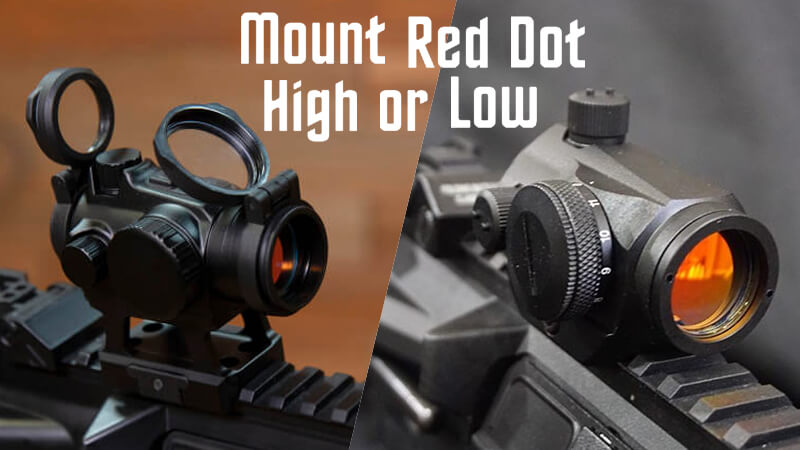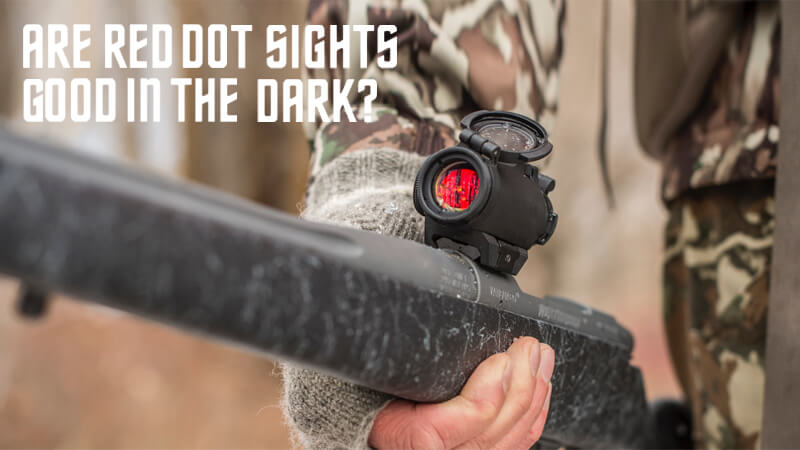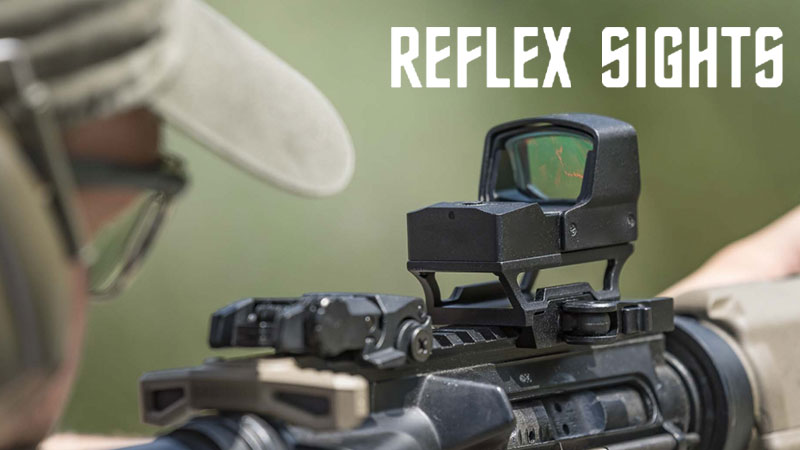If you are like me and just purchased a crossbow but don’t have a scope for it yet you may be wondering if I can just install any old scope on top and be good to go. After all, most of us shooters probably have an old scope laying around that isn’t getting much use. So, can we install it on a crossbow?
Yes, you can put (some) riflescopes on crossbows. There is some risk that it won’t hold up to the severe ‘forward’ recoil (opposite that of a rifle) that a crossbow thrusts into the scope but still, many have been doing it for years.
Most people do not like using riflescopes for crossbows because they are primarily designed for long-distance shooting (100+ yards) while crossbows are around 40 yards. Due to the close shooting distance, it makes it difficult to use most rifle scopes.
The majority of high-quality crossbow scopes are factory-calibrated (parallax-free) for 50 yards or less (preferably less). For example, Excalibur crossbow scopes are set for 30 yards, while the Nikon Bolt is set for 20 yards, both of which are ideal shooting distances.
A good air gun scope will work well on a crossbow because it is designed to be very accurate at close ranges and most air guns have the same type of recoil as a crossbow.
Shotgun and muzzleloader scopes are normally factory set at 75 or 50 yards, so they may work as well but are not ideal for standard archery hunting shooting distances.

Most common crossbow scopes
Lots of people ask us online questions related to crossbow optics. Many don’t quite understand the difference between a speed rated (variable power scope) and a non-speed rated (multi-line) scope.
I’ll briefly explain these two scope options for those crossbow shooters out there buying their first scope. As with all scopes, there is a large selection out there. We will start at the lower end and work our way up.
The majority of low to midline crossbows come with a non-speed rated scope and a removable scope cap. A non-speed rated scope is going to have maybe five or six reticles, but the only thing you can truly adjust with these types of scopes is your windage and elevation turrets.
In most cases, the user manual will say that each reticle will adjust for 10-20 yards. What that means, is if you are shooting at a 20-yard target and then decide to move it back 10 yards, the first reticle should be accurate at 30 yards.
But unfortunately, in many cases, it won’t be exactly 30 yards, and when you adjust to your second reticle it could be 43 yards and your third reticle 52 yards.
So, the only way you are going to see exactly what the rest of your reticles are set at is to go out and do your homework. Get in the backyard, or go out to the range, so you know exactly where your reticles are measuring up.
If you are looking for a small upgrade from non-speed rated scopes the Hawk xb1 is a nice place to start. This scope is a speed-rated scope meaning it will have speed ratings usually listed on the back of the scope. Most of the scopes have speed ratings from 250-475. When you purchase a new crossbow the dealer (or user manual) will be able to tell you how fast the bow is. Meaning at what speed the arrow travels once fired.

The speed rating is where you want to start when dialing in a new crossbow scope. But this doesn’t mean if you bought a crossbow rated for 400 feet per second that all you need to do is strap on your scope, set it to 400 then all your shots will line up perfectly.
The majority of speed-rated scopes are usually slower than what the speeds of bows are listed at. So, think of your bow speed rating as only a good reference point when first sighting in your scope.
So let’s say you just purchased a bow that’s rated at 360 a good way to dial in your new speed rated scope is to first adjust the windage and elevation adjustments to 20 yards, then set your scopes speed rating to about 365. After this is done take a shot at a target around 40 yards. After each shot, you will need to adjust your speed rating. If you are low then turn your speed rating down if you are high then turn the speed rating up. After three or four shots you should have a pretty good idea where the perfect setting is, once you find it, I would recommend marking it. If you are worried about losing arrows you can start at 20 yards and then slowly move your target back.
One quick point to make is that you cannot use the speed rating as a zoom, if your turn the dial up to 425 it will not only increase your magnification but also mess up everything you did with all your reticles.
So the key about a speed-rated scope with multiple reticles is that once you set it don’t mess with it.

How to increase your crossbow scope accuracy
If you are having a little trouble with accuracy, pulling up on your target, or having trouble immediately finding your target in your scope. One thing that might help is a cheekpiece, cheek rest or cheek riser (lots of names for the same thing). A cheekpiece allows your head to be lifted off the stock a little so your eyes are in better line with the scope.
A lot of modern crossbows come with cheekpieces pre-installed but if yours does not, then you may want to give one a try. It will help eliminate parallax and those little black circles that sometimes outline the outer edges of our scope images when we are sighting in on a target.
Crossbow quick sighting guide
- Determine arrow speed (if you have a variable scope)
- Set the dial on the scope
- Take a shot at 20 yards
- Make windage and elevation adjustments
- Fine-tune at 40-50 yards
- Once you hit dead center at 40-50 yards your scope is good to go.
Hopefully, these tips will help next time you are out sighting in your new or old crossbow scope. If you purchase a variable or (speed-rated) scope it should be a breeze. If you are using an old rifle scope it may take a little more time out in the backyard or range to properly sight it in. Happy shooting!








Leave A Comment
You must be logged in to post a comment.